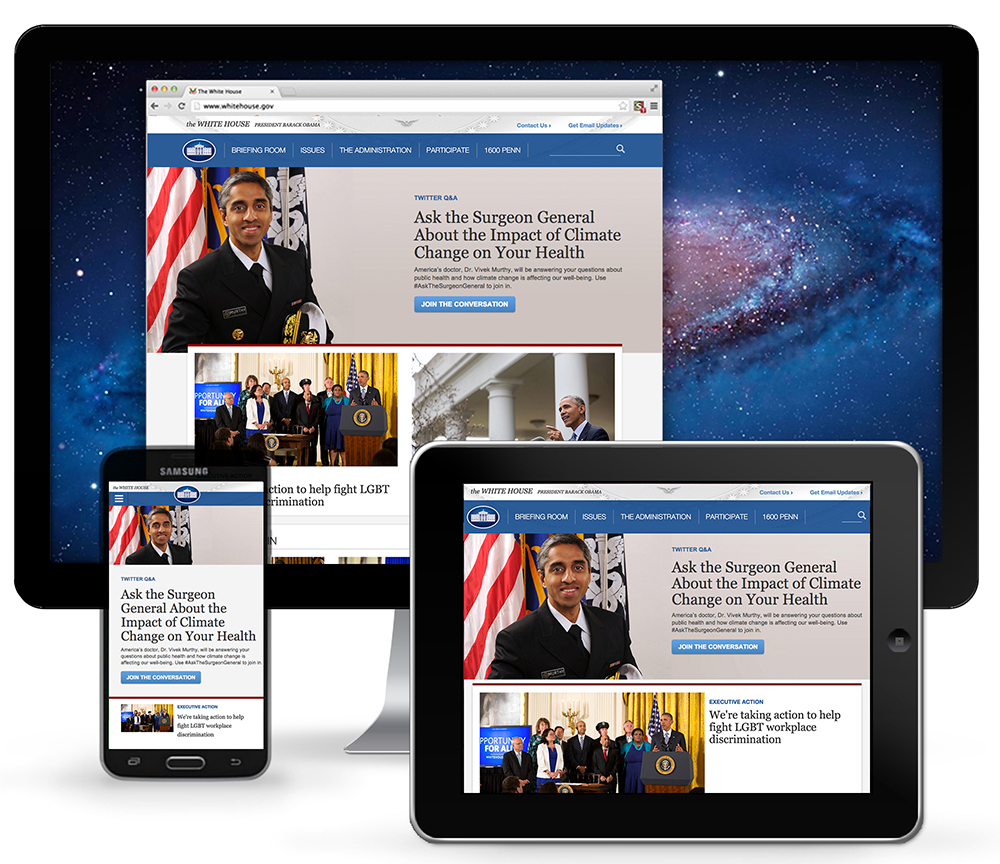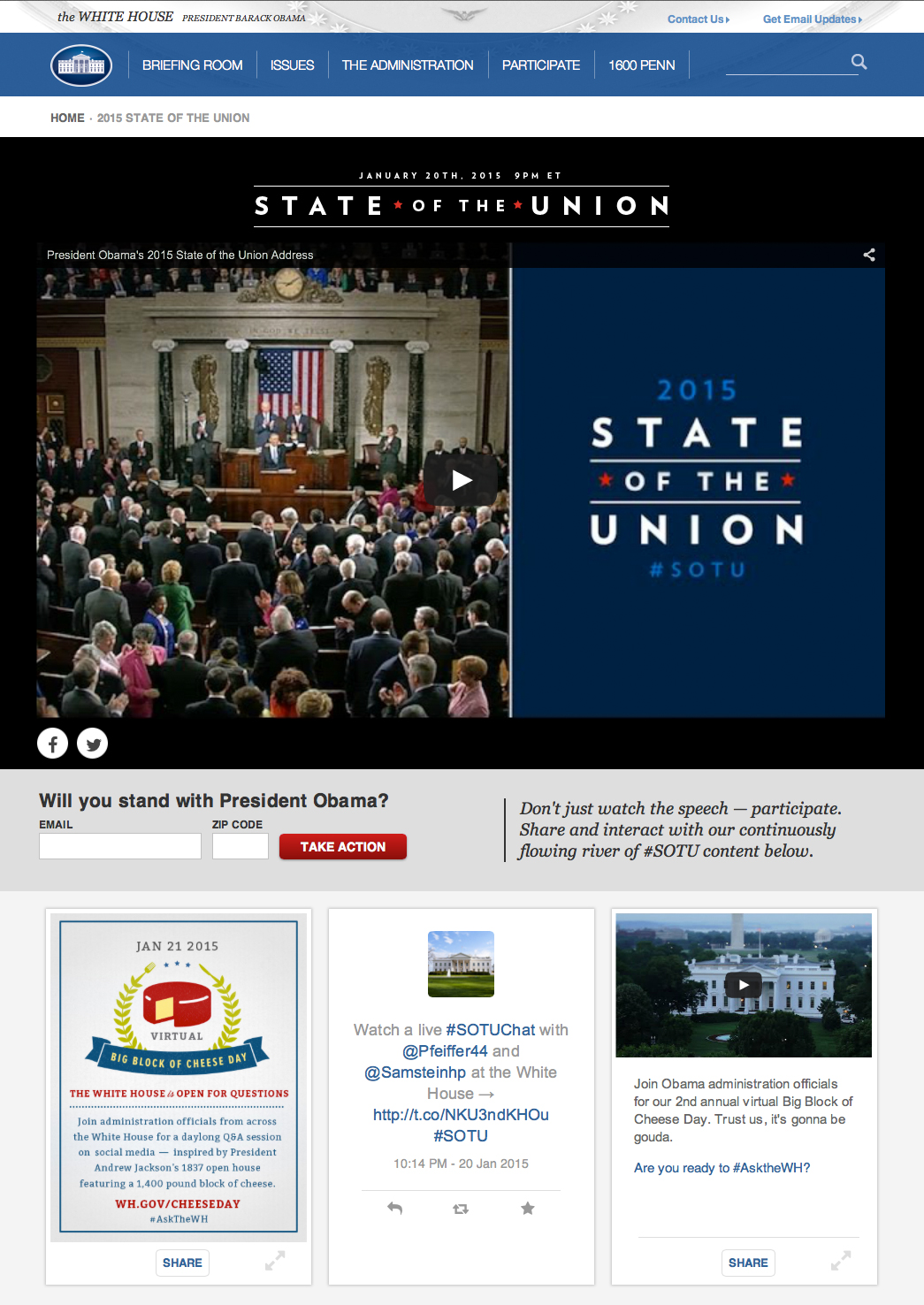
Last night, we released the first-ever responsive White House homepage. Here's what that means: The WhiteHouse.gov landing page now displays content in a consistent way, no matter which device you're using — desktop, laptop, mobile phone, or tablet. This also means that we're helping you find the most relevant content as quickly as possible.
This is a landmark change in a series of improvements to our online platforms to make them more accessible, user-friendly, and in line with modern best practices. And this is just the first phase in revamping the White House homepage. We will continue to iterate on the design and features, rolling out enhancements along the way.
Over recent months, we have released a series of responsive features and sections. These updates have included popular events like the State of the Union, as well as informational pages like the biographies of Presidents and First Ladies which receive a high volume of visitors every day. And over the next couple of months, we'll update some features we think you'll find useful as well as some popular sections including Latest News (also known as the White House blog) and the White House Press Office.
This section-by-section approach to upgrading WhiteHouse.gov lets us prioritize improving parts of the site that will be most valuable to you, enables us to roll out new features quicker and more frequently, and allows us to receive and incorporate your feedback along the way to help guide our efforts. Historically, projects like this have been undertaken as a single, large-scale overhaul for a whole site. The downside of that model is that it requires foreseeing exactly what the end product needs to be at the outset, and as a result, often misses the mark. The processes we're using now are known as "iterative design" and "agile development," and reflect a larger user-centric effort within the Federal government to transform the ways we design, build, and deliver technology.
Our design and development teams here at the White House have been using this model for several years, and we are part of a growing trend within the government – now being led in part by the efforts of groups like GSA’s 18F and the U.S. Digital Service, who are also looking to recruit talented design, development, and digitally-savvy problem solvers to do meaningful work solving problems within the United States government.
Our new homepage is just the latest example of our efforts to better serve the public.
Do you have feedback for how we can better serve your needs on WhiteHouse.gov? Let us know here.
Read more on design and development at the White House:
- President Obama is the first President to write a line of code
- The 2016 Budget: How we're using open government tools
- Enhancing the 2015 State of the Union with new digital tools
- Turning government data into better public service
- Using human-centered design for the federal government
- Learn why innovative job-training programs are important
- Announcing the National Week of Making
Are you a citizen developer interested in using government data or tools? Visit WhiteHouse.gov/Developers.
And for more regular updates on other exciting happenings on WhiteHouse.gov, follow us on Twitter @WHWeb.




